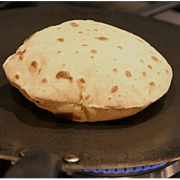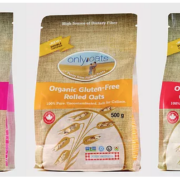New Guidelines Announced for Introducing Gluten to Infants at Risk for Celiac Disease
Simple and straightforward recommendations have been announced, based on data that has emerged over the past 4 years.
- Stefano Guandalini, MD, March 2019 IMPACT Magazine, cureceliacdisease.org 1
In 2010, we published an article in IMPACT talking about the latest infant feeding guidelines. It discussed timing (the optimal time to introduce gluten to your baby) as well as the protective effect of breast feeding. That information was backed up by studies and was widely accepted.
As sometimes happens in science, new studies disprove the old and our knowledge changes and evolves. In this case, through a number of large prospective studies, we discovered that our old assumptions about infant feeding were largely inaccurate and that new feeding recommendations are needed.
The new recommendations, based on data that has emerged over the past 4 years, are simple and straightforward. They pertain strictly to families who are at risk for celiac disease, where one of the following two conditions exists:
- One first degree family member (a parent or a sibling) has celiac disease
- The newborn baby has been tested for genetic predisposition to celiac and is positive for DQ2.5 or DQ8
WHAT WE KNOW FROM THE RECENT STUDIES IS THE FOLLOWING:
Gluten in large amounts in the first two years favors the onset of celiac disease (again, only in the patient population described above).
- Thus, gluten-containing foods should be given, beginning at the usual age of 4-6 months, but during the first 2 years should be less than 5 grams per day on the average, (i.e. less than about 1 ounce of pasta or 1 slice of bread)
 The best preventative strategy to reduce incidence of celiac disease in this vulnerable population is healthy eating in accordance with the Mediterranean Diet, again during the crucial first 2 years of life. Such a diet in particular should be based on high consumption of vegetables and grains and low consumption of refined cereals and sweet beverages.
The best preventative strategy to reduce incidence of celiac disease in this vulnerable population is healthy eating in accordance with the Mediterranean Diet, again during the crucial first 2 years of life. Such a diet in particular should be based on high consumption of vegetables and grains and low consumption of refined cereals and sweet beverages.
Although breast feeding does not provide protective benefit to those at risk of celiac disease as we previously thought, we hope people do not conclude that breast feeding is not beneficial to newborns! It is, for many other reasons, and we do not want to discourage new mothers from breast feeding. However, it just does not appear to have a benefit in reducing incidence of celiac disease.
- One thing that has not changed since 2010 is that the overall risk of your child developing celiac disease is still small: 1/8 of daughters and 1/13 of sons of celiac parents will develop celiac disease in the course of their lives. However, the steps outlined here can make it smaller still.
According to the National Institutes of Health, The Mediterranean Diet “consists of fish, monounsaturated fats from olive oil, fruits, vegetables, whole grains, legumes/nuts, and moderate alcohol consumption” (1) Generally, the emphasis is on unprocessed foods and less animal protein. In other words, it does not include goldfish crackers or chicken nuggets. This diet can certainly be challenging for a family that is pressed for time and resources, but a little research and effort, it can be implemented and will soon become second nature. Whole grains can easily be substituted for processed grains (think whole grain bread instead of white bread, brown rice and whole grain pasta in place of white rice and semolina pasta). Beans and rice are easy to prepare, and we can all eat more fruit and vegetables.
SIX STUDIES THAT DISCUSS RESEARCH ON INFANT FEEDING FOR BABIES AT RISK FOR CELIAC DISEASE:
- Dietary Patterns After the Weaning and Lactation Period Are Associated With Celiac Disease Autoimmunity in Children, in Gastroenterology. 2018 Jun;154(8):2087-2096.e7. doi: 10.1053/j.gastro.2018.02.024. Epub 2018 Mar 2.
- Does infant feeding modulate the manifestation of celiac disease and type 1 diabetes? in Curr Opin Clin Nutr Metab Care. 2017 May;20(3):222-226. doi: 10.1097/MCO.0000000000000367.
- Randomized feeding intervention in infants at high risk for celiac disease, in N Engl J Med. 2014 Oct 2;371(14):1304-15. doi: 10.1056/ NEJMoa1404172.
- Systematic review with metaanalysis: early infant feeding and coeliac disease. update 2015, in Aliment Pharmacol Ther. 2015 Jun;41(11):1038-54. doi: 10.1111/apt.13163. Epub 2015 Mar 26.
- Introduction of gluten, HLA status, and the risk of celiac disease in children. in N Engl J Med. 2014 Oct 2;371(14):1295-303. doi: 10.1056/ NEJMoa1400697.
- Infant feeding and risk of developing celiac disease: a systematic review. in BMJ Open. 2016 Jan 25;6(1):e009163. doi: 10.1136/ bmjopen-2015-009163.
1 http://www.cureceliacdisease.org/wp-content/uploads/CdC_Newsletter_IssueOne_032019_v6.pdf














